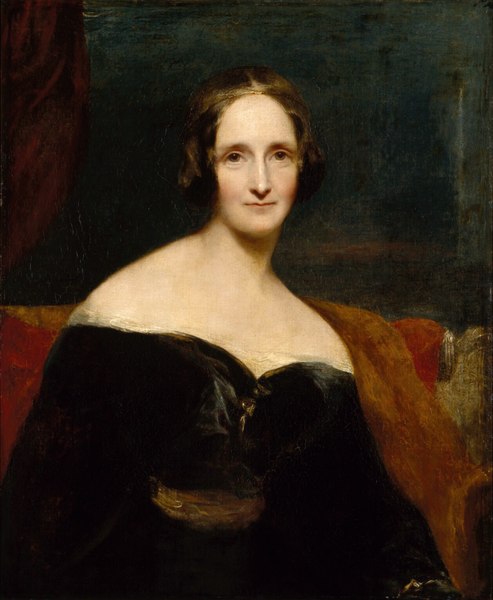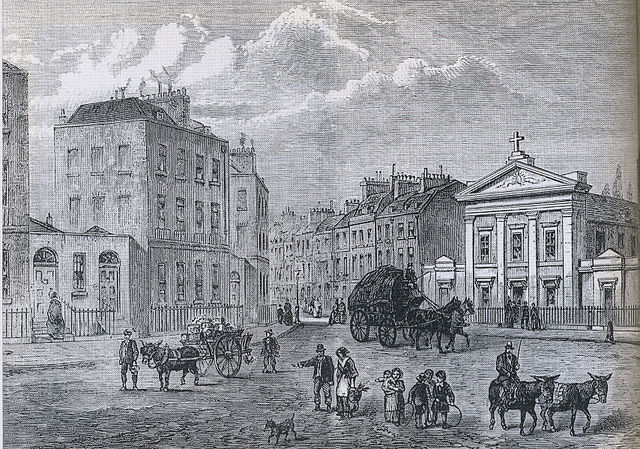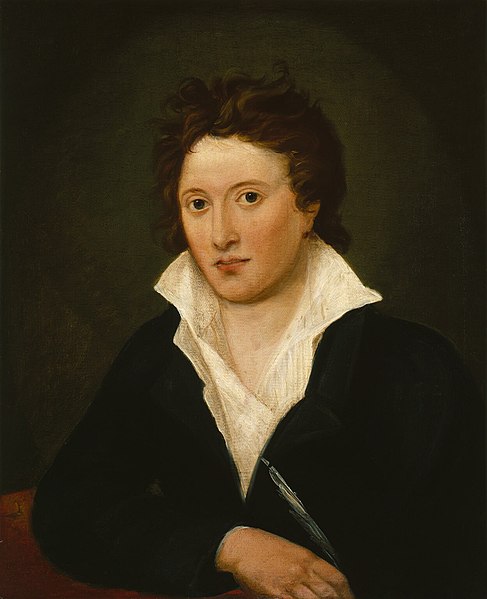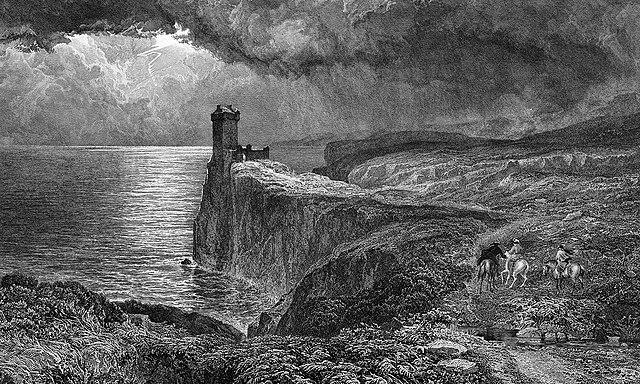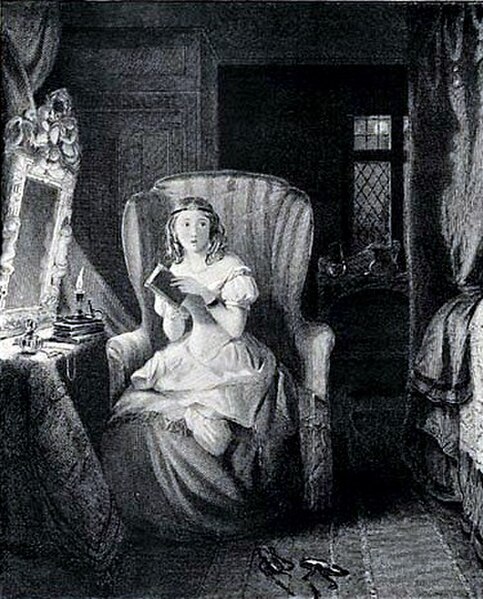Mary Wollstonecraft Shelley was an English novelist who is best known for writing the Gothic novel Frankenstein; or, The Modern Prometheus (1818), which is considered an early example of science fiction. She also edited and promoted the works of her husband, the Romantic poet and philosopher Percy Bysshe Shelley. Her father was the political philosopher William Godwin and her mother was the philosopher and women's rights advocate Mary Wollstonecraft.
Richard Rothwell's portrait of Shelley was shown at the Royal Academy in 1840, accompanied by lines from Percy Shelley's poem The Revolt of Islam calling her a "child of love and light".
Page from William Godwin's journal recording "Birth of Mary, 20 minutes after 11 at night" (left column, fourth row)
The Polygon (at left) in Somers Town, London, between Camden Town and St Pancras, where Mary Godwin was born and spent her earliest years
Percy Bysshe Shelley was inspired by the radicalism of Godwin's Political Justice (1793). When the poet Robert Southey met Shelley, he felt as if he were seeing himself from the 1790s. (Portrait by Amelia Curran, 1819.)
Gothic fiction, sometimes called Gothic horror, is a loose literary aesthetic of fear and haunting. The name refers to Gothic architecture of the European Middle Ages, which was characteristic of the settings of early Gothic novels.
The ruins of Wolf's Crag castle in Walter Scott's The Bride of Lammermoor (1819)
Strawberry Hill, an English villa in the "Gothic Revival" style, built by Gothic writer Horace Walpole
The Gothic Temple folly in the gardens at Stowe, Buckinghamshire, UK, built as a ruin in 1741, designed by James Gibbs
Catherine Morland, the naive protagonist of Northanger Abbey (1818), Jane Austen's Gothic parody

